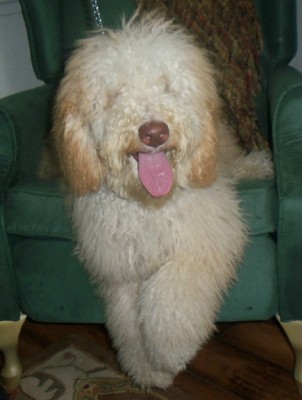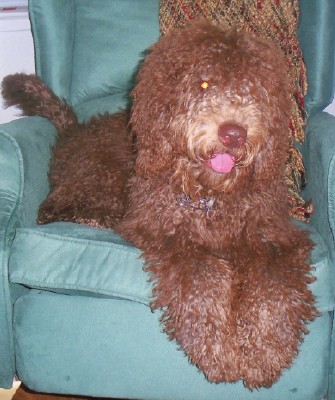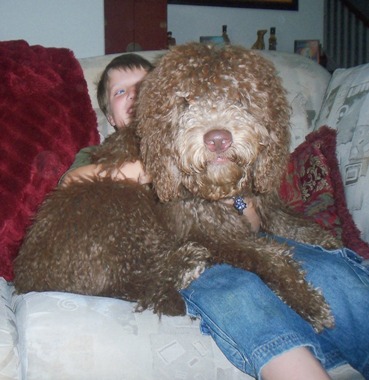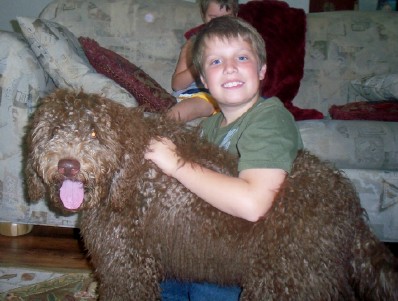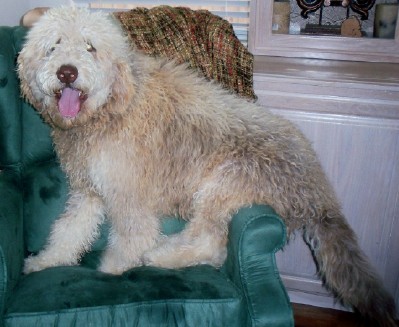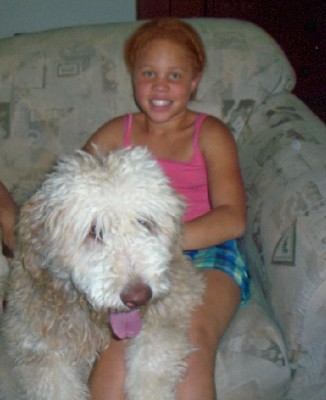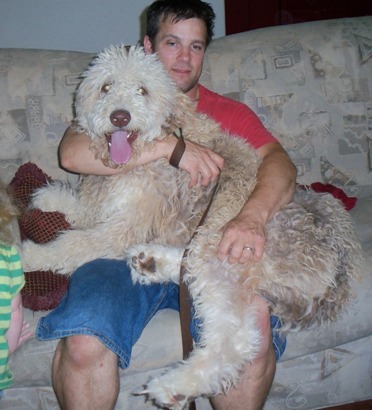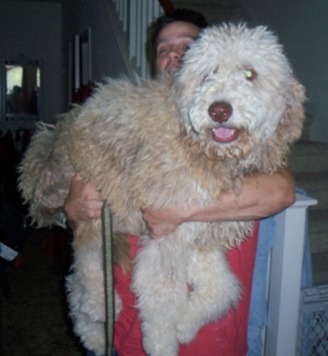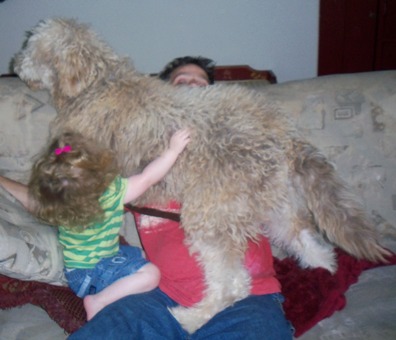ASD COMPANION DOODLES
The Breed(s)
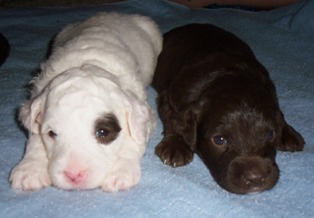
|
Premium Breeders List!
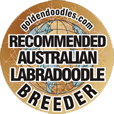
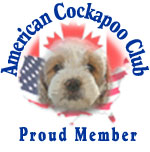
Premium Breeders List!
|
|||||||||
The Labradoodle originated in Australia from The Guide Dog Association of Australia, when the association received a enquiry from a blind woman in Hawaii, requesting a guide dog that would not aggravate her allergies. Mr. Wally Conron was the driving force behind this program, which first bred a Labrador to the Standard Poodle. After years of research, the Australian lines have been brilliantly developed. These highly developed lines are consistent in gentle temperaments, allergy/asthma friendly, non-shedding coats and wonderful intelligence. The Australian Labradoodle, continues to be the gold standard by which all labradoodles are measured. These are the qualities we want in our dogs, as we continue this incredible line! We have recently added Multigenerational English Goldendoodles to our program to further expand our endeavor! Overall, the Australian Labradoodle is a fun loving, quiet, calm yet comical, loving companion for families, as well as a fantastic service animal, being easily trainable, loyal and intelligent. The Labradoodle is not a recognized breed as of yet, however, many breeders are working toward developing a breed standard for the future recognition of the Labradoodle. English Goldendoodles demonstrate similar characteristics, and often display a blockier build, and a non-shedding allergy friendly coat that can be achieved even in earlier generations than typical to Labradoodles. The English Golden Retriever is known for its full thick coat, and blocky head and stance, as well for its calm easy-going temperament, making it the perfect addition to our Program! Sizing Classifications of Labradoodles/Goldendoodles: Miniature/Small (15-25 lbs, 13-17 in" at the shoulder). This is actually a Medium Sized dog by general dog standards, but in "doodle" terms, constitutes a "mini/small". For example, the Chocolate dog kissing my daughter to the left is considered a Small. Medium (30-45 lbs, 17-21" at shoulder). This is a larger dog, often closer to a Lab size. Standard (45-90 lbs, 22" or more at shoulder). The typical weight is between 60-70 pounds. This is a very large and sturdy dog. Photo examples of sizes of Labradoodles |
|||||||||
| Photos of "minis" or "smalls" | These are "mediums" | This is "small standard" | |||||||
|
|
|
|||||||
F1, F2B, ALF, Australian....HUH??? Important Information RE Generations of Labradoodles: Anyone can Breed a Labrador Retriever to a Poodle and call those puppies "Labradoodles", which is technically correct. However there is a HUGE difference between a first generation Labradoodle,(F1, Lab bred to Poodle), and a an Australian or Multigenerational Labradoodle whose lines have been developed for many many years, if not decades, with purposeful and well-thought out pairings. Early generation Labradoodles may have inconsistent coats and shed, and not possess the hypoallergenic qualities that so many seek. Also, if a Breeder does NOT conduct proper health testing to screen out genetic disorders, you may end up with a wonderful puppy, but one that sadly develops life-altering health issues, even in it's early years. Breeders like myself who do COMPLETE health screenings and choose only from the finest lines, and then create pairings based on the optimal results for health and temperament above all, as well as overall conformity of the Breed, would like to differentiate the terminology behind the generations and what each may "mean". If you are new to Labradoodles/Goldendoodles and you talk to someone who is familiar with the Breed, you might get lost in all the **“Labradoodle lingo”. Here is a little reference guide to help you through.... **“Labradoodle lingo as it pertains to "Goldendoodles” - It is important to note that while Labradoodles and Goldendoodles possess many of the same qualities, they still can vary greatly. An earlier generation Goldendoodle is much more likely to have the coat qualities desired, than would an early generation Labradoodle. Part of this reason is due in fact to the differences between the Labrador, and the English Golden. An English Golden has a longer, fuller coat than the short haired Labrador. Therefore when a Golden English is bred to the Poodle or to another Goldendoodle, it can achieve the fuller coated, allergy-friendly non-shed qualities that may take Labradoodle many more generations to achieve. It is our goal to breed for this coat consistency in BOTH breeds. In summary, an F1b, or F2 Goldendoodle may very well demonstrate the excellent coat consistency for which we strive in any of our Breeds! F1 = 50% Labrador and 50% Poodle (most likely shed, size restrictions, usually standard) F1-B = 25% Labrador Retriever and 75% Poodle (F1 Labradoodle and Poodle cross) - Still may shed, coat quality uncertain, size restrictions F2 = F1 Labradoodle and F1 Labradoodle cross (still questionable coats and size restrictions) F3 = F2 Labradoodle and F1 Labradoodle cross or similar, and so on. F3 or above is considered "Multi-generation" (see below). (LO) = Labradoodle Origin - This term describes the dogs above or dogs that have exclusively Labrador and Poodle Parent Breeds in their background. (AL) = Australian Labradoodle - a dog made up of six different breeds : Labrador Retriever, Poodle, Irish Water Spaniel, Irish Soft Coated Wheaton, American Cocker Spaniel, and English Cocker Spaniel. These breeds were selected over many years by researchers in Australia to develop specific traits and qualities. These dogs must have over three generations of AL-to-AL in their pedigree to be considered an Multigen Australian Labradoodle. According to new guidelines from Australian Labradoodle Association of America, to be considered an "Australian Labradoodle", the dog must at least contain Lab, Poodle, and Cocker. ** Multi-generation = This is an F3 generation or greater. Multi-generation can also refer to an Australian Labradoodle Foundation Dog (ALF) - This term describes dogs that have both the Labradoodle Origin (LO) and an Australian Labradoodle (AL) Parent Breed in their heritage. **IMPORTANT NOTE** all dogs formerly referred to as ALFs are now considered Australian Labradoodles. Infusion - In the development of any new breed, a dog breed is “infused” with another breed (as those mentioned above were "infused" into the AL) to develop whatever traits the breeder is trying to achieve. With the Australian Labradoodle and the Labradoodle, infusion of the list of dogs above is an accepted and expected process. Infusion is important not only to improve the looks or temperament of a dog breed, but also to create a larger gene pool. We hope this helped to clear things up a bit if you are a bit confused! (I know I was at first!) Enjoy our web site and feel free to inquire more with us about these wonderful breeds! |
|||||||||
Contact us for more information
Click to email: ASD Companion Doodles
ASDCompanionLabradoodles@hotmail.com
(916)580-8040



ASD Companion Doodles
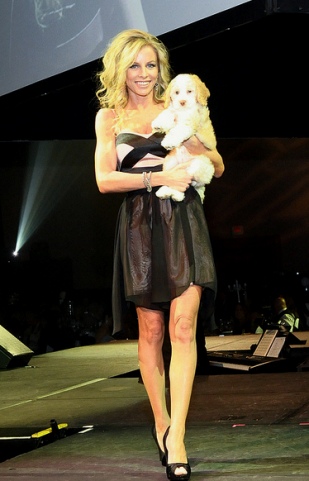

.jpg)
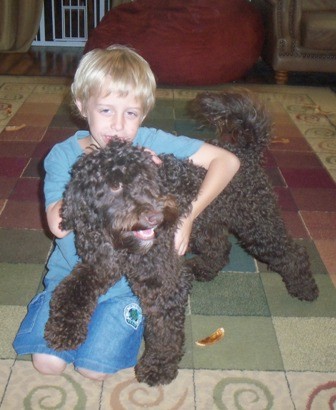

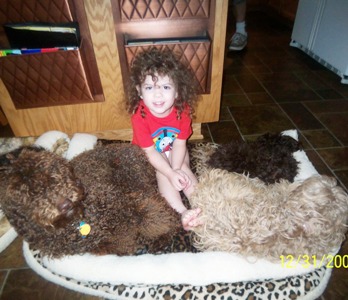
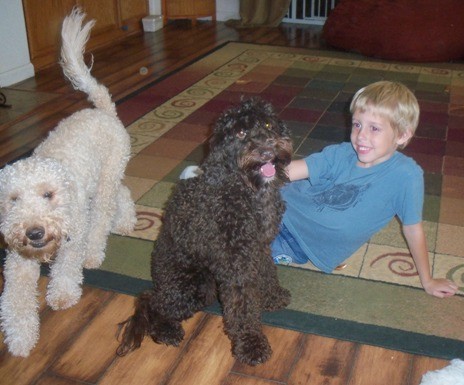
.jpg)
